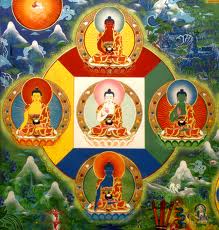The following is an excerpt from a teaching by Jetsunma Ahkon Lhamo offered during a Phowa retreat:
After the three and a half days of unconsciousness occur, another period begins which is called the bardo of dharmata. It’s also called the bardo of becoming. It looks or feels as though a person is emerging from a deep sleep. It is at that time that a person actually fully realizes that they are dead. If they have no training, then they have no capacity to realize beforehand. This is, again, three days after, and in some cases the body has been handled, or the body has been cremated. The person, although they are unconscious at that time, still has enough of a connection that when they wake up they are aware (and they are even residually aware in their sleep) of what the body is experiencing. Do not cremate the body before three days. Do not do that. Giving body organs? It depends on how you feel about it. There’s a lot of virtue in that. The timing? Well, you have to do that immediately; there’s no choice. But in that case you would be doing something compassionate, and even though it wouldn’t be the best for your own death situation, you would wait until the inner death ceased. The wise thing to do would be to have a lama come and practice Phowa with you. The inner wind would have ceased. If the lama is worth their salt and you have any devotion, you should be all right by that time, and you can then donate the organ within a reasonable amount of time. But for myself, my decision is that even though I would love to just keep manufacturing organs for lots of people to have, I would love to just keep giving them out, my decision is that I feel I can help people better during the course of my life; and I also want to achieve for myself, again and again, the most auspicious birth so that I can return again and again in a form to benefit sentient beings. I feel that that is ultimate benefit for sentient beings, rather than what my eyes could give, or something like that. So it’s a question of how you want to benefit sentient beings.
It is during this period, in the bardo of dharmata, that the Buddhas of the five families begin to manifest themselves. Now when you think of the Buddhas of the five families manifesting themselves, what do you think happens? Do you think that they have some sort of warning bell that tells them when you die, and they sort of know,“Oh, she’s dead. Better hurry up,” so they run from the five different directions and they come over and visit you, and they just sort of hang out, wave at you? No, it’s not like that. Actually, the Buddhas of the five families are seen as separate displays and separate emanations, but they are intrinsically present in our minds as our own nature, our own five wisdoms. So you can say that the Buddha families each represent our own subtle intrinsic wisdoms. Whether we have them developed or not, that’s another story. For instance, we think about Amitabha Buddha. That family, the Lotus family, is associated with discriminating wisdom. Ratnasambhava Buddha, associated with the Ratna family, is the wisdom of equanimity. Amoghasiddhi Buddha, associated with the Karma family, is accomplishing plain wisdom, and Vairochana Buddha accomplishes the wisdom of the dharmadhatu. That’s the awareness of what is and what is not, as one. Akshobya Buddha is considered the Buddha of mirror-like wisdom. So each one of these is our own intrinsic awareness, our own intrinsic wisdom. As to whether or not we have them developed, that is another thing.
Copyright © Jetsunma Ahkon Norbu Lhamo All rights reserved












Dear Jetsunma, how fortunate we are to have access to your teachings. May I practice with disipline and diligence. Thank you.
Thank you my Lama!! OmManiPedmeHung!
“Oh, she’s dead. Better hurry up,” so they run from the five different directions and they come over and visit you, and they just sort of hang out, wave at you?
Actually, silly enough, I did kind of think of it that way.